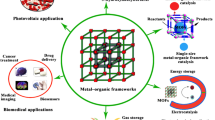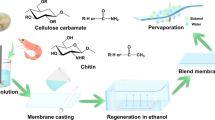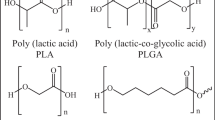Abstract
This work focuses on facile synthesis of pH responsive diblock copolymers based on acrylamide (AM) and 2-Acrylamido-2-methyl-1-propane sulfonic acid (AMPS) grafted on β-Cyclodextrin and have application in solid/liquid separation. β-CD based chain transfer agent (CTA) has been synthesized by one pot synthesis method. Three different grades of β-Cyclodextrin based Macro CTA were synthesized through RAFT polymerization technique. Macro CTA have been used further in synthesis of five different grades of β-CD grafted pH-responsive diblock copolymers i.e. (β-CD-PRP’s) by varying the amount of AMPS. The polymeric materials were characterized by Fluorescence Spectroscopy, FT-IR, GPC, 1H-NMR, SEM, TEM, TGA, and XRD. β-CD-PRP’s shows their micellization properties at acidic pH < 6.57 with polymer conc. > 0.336 mg/mL and has also been studied for removal of model contaminant (kaolin). Among all grades of diblock copolymers, grade 3 shows best performance in the removal of kaolin from aqueous solution at 7 and 5 pH values.

Graphical abstract












Similar content being viewed by others
References
Pawar K, Kutcherlapati SR, Yeole N, Jana T, Hundiwale D (2018) Synthesis of poly (N-isopropylacrylamide-b-N-vinylcarbazole) copolymers via RAFT polymerization and its stimuli responsive morphology in aqueous media. J Polym Res 25(4):91 (1-10)
Hoffman AS (2013) Stimuli-responsive polymers: biomedical applications and challenges for clinical translation. Adv Drug Deliv Rev 65(1):10–16
Patra P, Seesala VS, Son SR, Roy RK, Dhara S, Ghosh A, Pal S (2019) Biopolymeric pH-responsive fluorescent gel for in-vitro and in-vivo colon specific delivery of metronidazole and ciprofloxacin. Eur Polym J 114:255–264
Fang R, Cheng X, Xu X (2010) Synthesis of lignin-base cationic flocculant and its application in removing anionic azo-dyes from simulated wastewater. Bioresour Technol 101(19):7323–7329
Way AE, Hsu L, Shanmuganathan K, Weder C, Rowan SJ (2012) pH-responsive cellulose nanocrystal gels and nanocomposites. ACS Macro Lett 1(8):1001–1006
Ho DK, Nguyen DT, Thambi T, Lee DS, Huynh DP (2018) Polyamide based pH and temperature responsive hydrogels: synthesis and physicochemical characterization. J Polym Res 26(7):1–9
Işıklan N, İnal M, Kurşun F, Ercan G (2011) pH responsive itaconic acid grafted alginate microspheres for the controlled release of nifedipine. Carbohydr Polym 84(3):933–943
Zoppe JO, Habibi Y, Rojas OJ, Venditti RA, Johansson LS, Efimenko K, Laine J (2010) Poly (N-isopropylacrylamide) brushes grafted from cellulose nanocrystals via surface-initiated single-electron transfer living radical polymerization. Biomacromolecules 11(10):2683–2691
Pawar K, Kutcherlapati SR, Yeole N, Hundiwale D, Jana T (2018) Vesicular and micellar self-assembly of stimuli-responsive poly (N-isopropyl acrylamide-b-9-anthracene methyl methacrylate) amphiphilic diblock copolymers. J App Polym Sci 135(28):46474
Gupta KC, Khandekar K (2003) Temperature-responsive cellulose by ceric (IV) ion-initiated graft copolymerization of N-isopropylacrylamide. Biomacromolecules 4(3):758–765
Wang LQ, Tu K, Li Y, Zhang J, Jiang L, Zhang Z (2002) Synthesis and characterization of temperature responsive graft copolymers of dextran with poly (N-isopropylacrylamide). React Funct Polym 53(1):19–27
Tan S, Saito K, Hearn MT (2018) Stimuli-responsive polymeric materials for separation of biomolecules. Curr Opin Biotechnol 53:209–223
Liu YN, Yu HY, Qin ZY, Chen L (2012) Enhanced heat conduction in cellulose Nanocrystals grafting polyethylene glycol as solid-solid phase change materials. In Adv Mat Res 557:563–566
Roy A, Maity PP, Dhara S, Pal S (2018) Biocompatible, stimuli-responsive hydrogel of chemically crosslinked β-cyclodextrin as amoxicillin carrier. J App Polym Sci 135(10):45939
Wu L, Zhang X, Chen L, Zhang H, Li C, Lv Y, Guo X (2018) Amphoteric starch derivatives as reusable flocculant for heavy-metal removal. RSC advan 8(3):1274–1280
Zhuang J, Gordon MR, Ventura J, Li L, Thayumanavan S (2013) Multi-stimuli responsive macromolecules and their assemblies. Chem Soc Rev 42(17):7421–7435
Jiang X, Lu G, Feng C, Li Y, Huang X (2013) Poly (acrylic acid)-graft-poly (N-vinylcaprolactam): a novel pH and thermo dual-stimuli responsive system. Polym Chem 4(13):3876–3884
Anirudhan TS, Sandeep S (2011) Synthesis and characterization of molecularly imprinted polymer of N-maleoylchitosan-grafted-2-acrylamido-2-methylpropanesulfonic acid and its controlled delivery and recognition of bovine serum albumin. Polym Chem 2(9):2052–2061
Smith AE, Xu X, McCormick CL (2010) Stimuli-responsive amphiphilic (co) polymers via RAFT polymerization. Prog Polym Sci 35(1–2):45–93
Liu H, Jiang A, Guo J, Uhrich KE (1999) Unimolecular micelles: synthesis and characterization of amphiphilic polymer systems. J Polym Sci Part A: Polym Chem 37(6):703–711
Laschewsky A, (1995) Molecular concepts, self-organisation and properties of polysoaps. In Polysoaps/stabilizers/Nitrogen-15 NMR 1–86
Zhang L, Eisenberg A (1995) Multiple morphologies of" crew-cut" aggregates of polystyrene-b-poly (acrylic acid) block copolymers. Science 268(5218):1728–1731
Jiang X, Qi Y, Wang S, Tian X (2010) New amphoteric flocculant containing beta-cyclodextrin, synthesis, charaterization and decolorization properties. J Hazard Mat 173(1–3):298–304
Mishra A, Bajpai M (2005) Flocculation behaviour of model textile wastewater treated with a food grade polysaccharide. J Hazard Mat 118(1–3):213–217
Wei T, Wu L, Yu F, Lv Y, Chen L, Shi Y, Dai B (2018) pH-responsive chitosan-based flocculant for precise dye flocculation control and the recycling of textile dyeing effluents. RSC Adv 8(69):39334–39340
Cong R, Pelton R (2003) The influence of PEO/poly (vinyl phenol-co-styrene sulfonate) aqueous complex structure on flocculation. J Colloid Interface Sci 261(1):65–73
Li H, Long J, Xu Z, Masliyah JH (2007) Flocculation of kaolinite clay suspensions using a temperature-sensitive polymer. AICHE J 53(2):479–488
Ma X, Tang X (2006) Flocculation behavior of temperature-sensitive poly (N-isopropylacrylamide) microgels containing polar side chains with OH groups. J Colloid Interface Sci 299(1):217–224
Demey H, Vincent T, Ruiz M, Nogueras M, Sastre AM, Guibal E (2014) Boron recovery from seawater with a new low-cost adsorbent material. Chem Eng J 254:463–471
Elwakeel KZ, El-Ghaffar MA, El-kousy SM, El-Shorbagy HG (2012) Synthesis of new ammonium chitosan derivatives and their application for dye removal from aqueous media. Chem Eng J 203:458–468
Skey J, O’Reilly RK (2008) Facile one pot synthesis of a range of reversible addition–fragmentation chain transfer (RAFT) agents. Chem Commun 35:4183–4185
Topel Ö, Çakır BA, Budama L, Hoda N (2013) Determination of critical micelle concentration of polybutadiene-block-poly (ethyleneoxide) diblock copolymer by fluorescence spectroscopy and dynamic light scattering. J Molec Liq 177:40–43
Kumar K, Adhikary P, Krishnamoorthi S (2014) Synthesis, characterization and application of water-soluble star polymers based on 2, 4, 6-tris-hydroxymethyl phenol and polyacrylamide. Polym Int 63(10):1842–1849
Acknowledgments
The authors gratefully acknowledge the financial support from the Science Engineering and Research Board (ECR/2016/000949), New Delhi, Government of India.
Author information
Authors and Affiliations
Corresponding author
Ethics declarations
Conflict of interest
There are no conflicts to declare.
Additional information
Publisher’s note
Springer Nature remains neutral with regard to jurisdictional claims in published maps and institutional affiliations.
Electronic supplementary material
ESM 1
(DOC 1.26 mb)
Rights and permissions
About this article
Cite this article
Kiran, K., Tiwari, R., Tungala, K. et al. pH tempted Micellization of β-Cyclodextrin based Diblock copolymer and its application in solid/liquid separation. J Polym Res 27, 150 (2020). https://doi.org/10.1007/s10965-020-02095-4
Received:
Accepted:
Published:
DOI: https://doi.org/10.1007/s10965-020-02095-4




